The final story in the General Electric promotional booklet for Horizons concerns the wizards of WED that brought the attraction to life. Without further ado…
Disney’s House of Magic
by Donna R. Carpenter
In 1964, a little boy named Tom Fitzgerald went to the New York World’s Fair and visited a pavilion called “Great Moments with Mr. Lincoln.” He stared in wonder as a startlingly lifelike facsimile of the nation’s 16th president rose from his chair to address his latter-day countrymen. Abe Lincoln not only talked – he emphasized his thoughts with gestures and his eyes raked the audience as though challenging debate. He shifted his weight from one foot to the other and his expression changed with the sense of his words. He almost seemed to breathe.
The impact was extraordinary. The boy made up his mind that someday he would work with the people who had made this marvelous figure. So, after graduating from Northwestern University, he went to California to convince the people at WED (Walter Elias Disney) Enterprises that he belonged in their house of magic.
Hired as a writer in the communications department, Fitzgerald worked his way into Show Design and, in 1981, was assigned to help write the script for the GE pavilion at EPCOT Center. He, Show Designer George McGinnis, and the Horizons design team applied the same attention to detail that made Lincoln come alive to the scenes at GE’s Horizons pavilion.
“The GE credo, ‘Better than the best’, is a phrase that we at Disney understand well,” says Fitzgerald. “Walt Disney had a favorite way of saying the same thing. When everyone felt that they’d done the best they could, he’d ask them to ‘plus’ it – make it even better. He’d spare no expense to help them do this: When animators were working on Bambi, he had live deer brought in for them to observe. When the Audio-Animatronics Abe Lincoln was created for the World’s Fair, he hired an actor to play Lincoln for his Imagineers (Disney’s word for the creative “team” at WED).

"Early stages of Horizons pavilion design included the making of detailed models for "Looking Back at Tomorrow" and space colony sets of show."

“But it’s the Disney staff’s ability to observe reality and then take it one step further – to make something larger than life – that enchants audiences. It’s the crocodile that smiles in Peter Pan and the nervous gestures of Lincoln giving a speech – the imaginative little details that no one else puts in.”
When Fitzgerald was assigned to Horizons, the main themes for the attraction had already been established by WED Senior Vice President John Hench, Executive VP for Creative Development Marty Sklar, McGinnis, and a host of WED Imagineers. The ride would include a whimsical look at past visions of the future; motion pictures of present-day science and technology presented in Omnisphere, the world’s largest motion picture system; and sets depicting Audio-Animatronics figures in different habitats of the future.
For the “Looking Back at Tomorrow” portion of the show, Fitzgerald examined ideas that famous futurists of the past had on rapid transit, space travel and robots. “The technologies that men like Verne and Wells envisioned were 100 years ahead of their time,” he recalls, “but the designs remained rooted in their own time.” Thus, this segment shows a spaceship with rivets and bolts and velvet cushions on its way to the moon, and a household robot with the appearance of an Art Deco antique.
Past Meets Future
How do you introduce the future in a dramatic way? WED Special Effects Manager Dean Sharits did it with a spectacular fiber-optic cloud wall, containing 40 miles of fiber and 22,000 points of light sheathed in hand-sculpted acrylic layers. The wall’s shifting colors and flashes of lightning give an illusion of traveling through time.
Horizons’ effects are more than just visual, though. “What would the citrus trees in our desert habitat be like if they didn’t smell like citrus?” asks Sharits. “But the tricky part isn’t getting the smell; it’s getting rid of it on cue.”
The difficulty that he doesn’t mention – perhaps because he’s so used to living with it – is designing reliability into all of EPCOT Center’s special effects, which operate 18 hours a day, 365 days a year. And those effects run the gamut from an erupting volcano to upside-down waterfalls.
For the segment depicting future habitats, WED Imagineers used an extended family and its friends to link different scenes. “We wanted to emphasize the family unit,” Fitzgerald explains. “Some people think that it may not exist in the future, but our feeling was that advances in transportation and communication will bring families closer together.”
The habitats where family members live were chosen carefully. “Both Disney and GE were anxious to show that desert, sea, and space could be interesting and practical places to live and work,” says McGinnis. “We got some concepts and models together and tried them out on the experts. For the space colony, we worked with Princeton physicist Gerard O’Neill. And we talked to NASA and Cal Tech’s Jet Propulsion Lab about growing crystals for semiconductors in space.
“For the desert portion, we worked with Carl Hodges, director of the Environmental Research Lab at the University of Arizona. Following his suggestions, we used genetic engineering principles to design new plants and create voice-activated robot harvesters and helium lifters to load and deliver crops to market.”
Subtle details were also considered in designing sets. “The future is often presented as all sterile colors and threatening angles,” McGinnis continues. “So we used a lot of soft forms – the circular kitchen comes to mind-and warm colors, particularly in the urban setting, the first future habitat presented. We kept ‘people’ details in mind, too. We’re convinced that even though environments will change, people won’t. Teenagers in our show still monopolize the phone; kids and dogs still exasperate mom and dad. We believe one of the main differences high technology will make is that it will give us more choices.”
Flavor Grapes and Pepcumbers
WED’s Alex Taylor, responsible for designing the futuristic plants and trees, had a tough problem. “Every time I designed something I thought was totally new, I would take it over to our horticulturists and they would tell me it already existed. I began to despair of ever coming up with something nature hadn’t already done.”
So Taylor turned to the animal kingdom for ideas, creating “Golden Glow,” the electric eel of the plant family. An ancient Greek musical instrument gave him the idea for the “Aeolian Harp,” which catches the wind to produce music. And semiconductor patterns inspired his “Circuit Egg Ivy,” which grows in a kinked and twisted pattern resembling an electronic circuit.
“Carl Hodges told me that using the principles of genetic engineering, I could let my imagination run wild,” says Taylor. “And I did.”
Taylor also designed future crops: “pepcumbers,” a cross between a pepper and a cucumber; “flavor grapes,” which grow in clusters of different colors and flavors; and the “lorange,” an elongated orange which grows on the outside of the tree, making it easy for robot laborers to harvest.
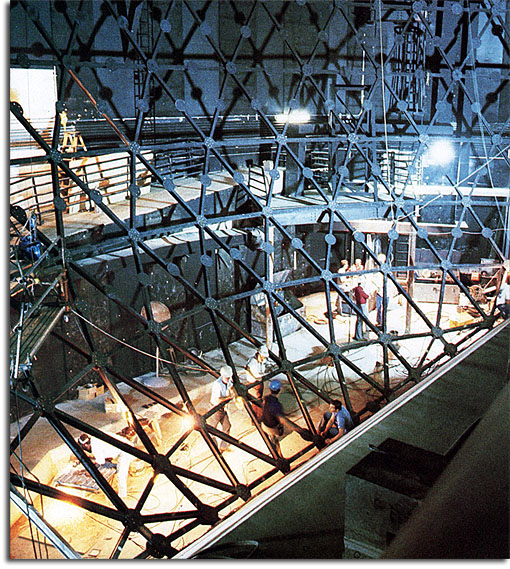
"While the 80-foot-high Onmisphere theater (top) was being constructed, filmmakers were designing, building, and filming enormous models for the Horizons finale."
Fantastic Film
An 80-foot-high screen presented another kind of problem – and challenge – to filmmaker Eddie Garrick. The Omnisphere theater, created by putting two of the biggest screens in the world together, was originally slated to be the finale to Horizons. Now it’s the centerpiece. It was to present images of science and technology in the world’s largest format. But the equipment to photograph some of the images desired for a screen that big – molecular structures, underwater scenes – and to animate others – computer data, Landsat photos – had not yet been invented. So Garrick, who has produced TV specials for National Geographic, helped design it.
His hard-won and stunning visual effects are complemented by a state-of-the-art sound system which uses digital recordings and transmits infra red light to the ride vehicles, where it is received and converted back into sound. Low-frequency sonic transducers attached to the vehicles near the base of each rider’s spine give the full-bodied “feel” of a concert-hall performance.
How Do You Follow That?
Moving the Omnisphere presentation from the finale to the middle of the show created the needs for a new finale. The catch? Designing something that would fit into the area left in the pavilion that would not be a letdown after the Omnispehere. McGinnis suggested using the ride vehicle’s on-board computer and a 50-foot “traveling picture” to allow guests to choose a ride through one of the habitats – ocean, sea or space – seen earlier.
Engineer Marty Kindel began working out the complicated logistics that would enable the guests in one ride vehicle to see the show of their choice, while the next group of guests would see the show they had chosen. By using GE Talaria projectors, tilting the ride vehicles and using the low-frequency transducers to create a feeling of acceleration, the Disney staff has come up with a way to make guests feel as though they are taking a high-speed ride into the scenes being projected.
Shooting the segments that would be seen by the audience was equally complex. David Jones, a special-effects veteran of Star Wars, spent two years designing, constructing and filming models for the three segments. “The desert film alone involved an 86-foot model and was the longest continuous sequence ever done with miniatures,” says Jones.
All filming was done by computer to get a precise camera path and a special gantry system was constructed to keep the camera from casting a shadow over the desert model. “All that for 31 seconds,” signs Jones. “But what seconds!”
The ride itself echoes the Horizons theme of choice in your future – just as you can choose the ending to your ride, you may someday be able to have a much larger choice in how and where you will live. That kind of tie-in appeals to Marty Sklar. “Horizons is the type of pavilion that I think Walt had in mind when he visualized EPCOT,” says Sklar. “It’s a synthesis of all the other pavilions in that it encompasses energy, transportation, communications and so on. And it incorporates a lot of ‘firsts’ for us as a company.
“It also provided an opportunity for some of the people who’ve been with us for 30 or 40 years to work with people in the 20s and 30s who grew up with the Disney culture.”
Tom Fitzgerald was drawn to WED to work with his childhood heroes, the people who could bring Lincoln back to life. And, though dreams of childhood seldom parallel reality, in this case the reality was even better. One of the people with whom Fitzgerald worked on Horizons was WED Show Quality Assurance Director Wathel Rogers. A Disney employee since 1939, Rogers started out as an animator, worked on Disney movies like Mary Poppins, and was one of the original group of Imagineers who, for the 1964 World’s Fair, created the Audio-Animatronics Mr. Lincoln.
THE GE-DISNEY CONNECTION spans almost a quarter of a century and zig-zags from New York to California to Florida.
Three years before the New York World’s Fair opened in 1964, GE planned to be there as an exhibitor. Wanting to have one of the best exhibits, the Company turned to Walt Disney, whose successful theme park in California – Disneyland – was drawing millions of visitors a year.
Already planning his Experimental Prototype Community of Tomorrow, Disney agreed to design the GE exhibit.
It was the first project Disney ever developed for an outside corporation and, launching into this new area of business, Disney himself created and designed the Carousel of Progress. Still successfully on display at Walt Disney World’s Magic Kingdom in Florida, it presents an entertaining review of the role electricity has played in improving the American standard of living from the 1890s to the present.
When the Carousel was nearly finished, Disney called in his people and representatives from GE for a preview.
As Dave Burke, who retired from GE two years ago as manager of Corporate Communications, recalls: “We all loved the Carousel when we saw it. Except Walt. To him, something was missing and he said afterward that it needed a ‘wienie.’ A wienie, I asked? What’s a wienie? One of Disney’s people said, ‘you’ll see.’ Walt promised the wienie in two weeks.”
Two weeks later the GE and Disney people reassembled to see the mysterious wienie. Before the show, Disney turned to Burke and told him a wienie should tie a show together, give it continuity. Anyone who has seen the Carousel of Progress now knows what the wienie is.
“It’s the dog,” says Burke. “And Walt was right. That shaggy pup pulled the whole exhibit together, gave it comic relief, provided transitions and, if you’ll excuse the expression, gave it a human touch.”
During the two years of the World’s Fair, the Carousel of Progress enjoyed more than 45 million visitors. And because it was so successful it was transported to Disneyland in Anaheim, Calif., in 1967 and then transferred to Walt Disney World in Florida in January 1975.
The Carousel was also instrumental in helping Walt Disney realize his EPCOT dream. Explains Marty Sklar, WED’s Executive VP for Creative Development: “When Walt first advanced his idea of EPCOT he said WED couldn’t do it alone. We’re in the entertainment business and, obviously, we felt our strength was to entertain people and communicate through our entertainment. But we had to bring in other companies, like GE, to add their expertise in developing our communication about the future. It was important to the credibility of EPCOT that we create a synergism – with Disney as the communicator, the entertainer, and companies like GE and Exxon and Kodak as the experts, the people who really are in the businesses we’re portraying.”
Sklar continues: “How do you start out interpreting a corporate culture? Just like there’s a Disney way to our company, there’s a GE style. Every company has its distinctive culture and legend and ways that it sees itself. Our job was to create a pavilion specifically for GE, whose theme is ‘the achievable future’. How do you bring that vision together?”
The answer comes from Karl Koss, General Electric’s manager of Corporate Advertising and Exhibits, who has succeeded Burke as GE’s liaison with WED.
“Both our cultures are always changing – tuning to different times, adopting contemporary styles without giving up valued substance. It’s the spirit that led the Disney people to propose what they did and that led us to approve it – a vision of the future firmly rooted in what we know can someday be done.
“Our cultures also share a spirit expressed in the theme lyrics of Horizons: ‘If we can dream it, we can do it.’ Disney calls it ‘Imagineering.’ At GE, it harks back to Thomas Edison’s philosophy that it takes a little inspiration, and a lot of perspiration.”
Adds Robert Pulver, manager of EPCOT Horizons for GE: “With Horizons now a reality, we’re working with the Disney organization on expanding the Carousel of Progress. Typical of our two cultures in ever-changing times, when we asked to meet and discuss our ideas, they said they, too, had specific ideas and welcomed a meeting. And so the GE-Disney connection goes on.”
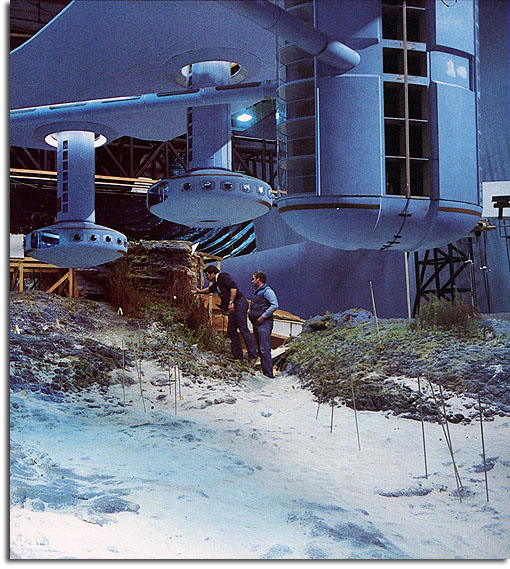

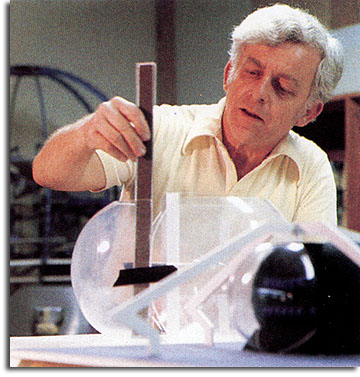
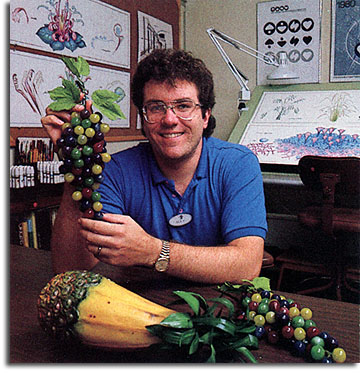
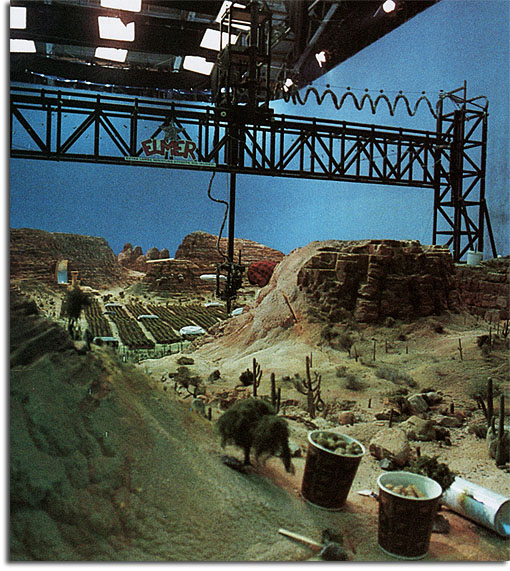
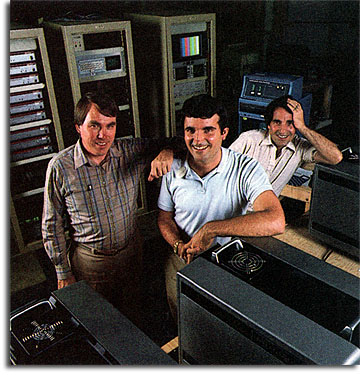
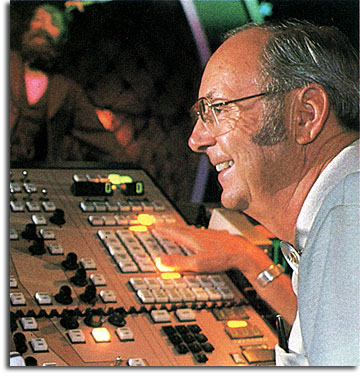
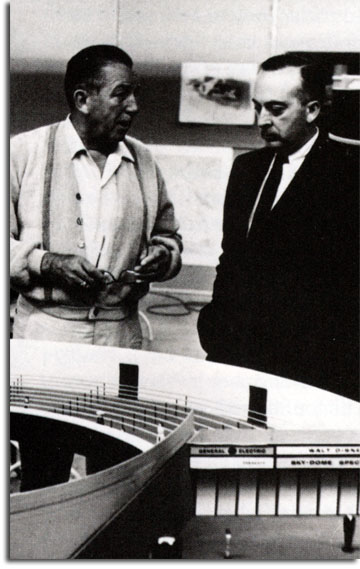
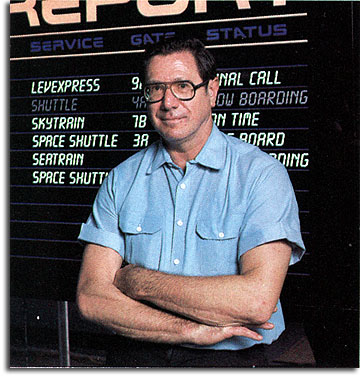
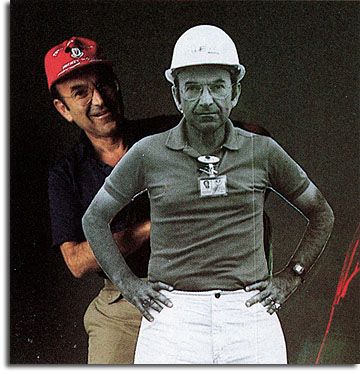
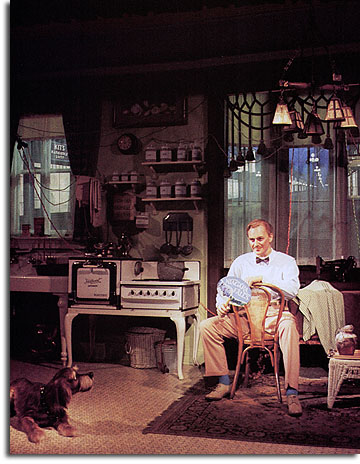








This attraction is what Epcot was all about. Without it, Epcot is pretty much meaningless. IT NEEDS TO BE REIMAGINED AND REBUILT & PUT IT WHERE JOURNEY INTO IMAGINATION CURRENTLY EXISTS. That is the type of building that should house Horizons. Incorporate theatre showing Michael Jackson and tie it to Horizons as well. Put Journey where the current, empty Wonders of Life building is. Disney has the buildings already available. Make Epcot what it should be. Horizons delivers the goods.
Excellent work as always!!
Thanks so much for the series. Yes, it would be great to see a re-imagined Horizons, but I can’t see it happening until Disney finds a corporate sponsor to help share with the project’s costs. Since Kodak is no longer at Imagination, I know of a corporation that has a whole bunch of cash and might make a good match — Apple. ImageWorks could be an advanced prototype display, or an area where people could do creative and fun things with Apple products. As long as it didn’t look too much like an Apple Store, mind you… they already have those!
Like Tom Fitzgerald, seeing GE Carousel of Progress as a youg man, was a big Disney impression and later influence. That came when I was getting a chance to work on it’s upgradeing in 1975 at WED before it’s being shipped to Walt Disney World. Coming off the new Tokyo Disneyland in 1983 and still WED, I was able to work on Horizons with George and John Hench in an Industrial Designer capacity that I had done during 2 Space Mountains and some early computer housing fabrication on what was called an Apple back in the mid 70’s.
It was great to see Imagineers “pushing the envelope” back then, now that there’s Email, the envelope has been pushed right into history.
This is really fascinating information on this attraction! Thanks for sharing it!
[…] The story of Epcot’s Horizons […]
This is copied from “Comments” on the first Hrizons Story. I was afraid it would be missed being the 30h Comment!
George
From Michael Crawford,
September 1, 2011 at 12:38 am · Reply
Thanks for the great discussion, guys. I apologize for not having been around, but for the last month or so I’ve been on the move and haven’t had my computer set up until today.
The authorship issue is very interesting, especially considering the Imagineer-as-celebrity phenomenon that has emerged since Walt’s death. Then again, Walt featured Imagineers on his own TV specials – I think of Hench, Marc Davis and Rolly Crump on the Disneyland 10th anniversary show. Mary Blair, too. Maybe Walt softened his stance over the years? It’s interesting that this was something that Irvine was already discussing when George joined WED.
George, any idea why GE didn’t use the space offered in Communicore? That seems unusual. Were there any plans for an exhibit or did it never get that far into design?
I also didn’t know George had worked on the Transportation post-show before Bob Rogers took over. That’s great information!
Thanks again for the great comments, everyone…
George McGinnis
September 4, 2011 at 11:06 am · Reply
Hi Michael,
Welcome back. Hope you had a productive month or relaxing vacation which ever is the case.
You asked, “any idea why GE didn’t use the space offered in Communicore?” Were there any plans for an exhibit or did it never get that far into design?
My post show concept was meant to be included in the main building and was designed before the first pavilion layout concept was completed. I believe it was the right decision for its cost to not take away from the ride/show length. But wrong to not have it in Communicore.
I heard the Post Show estimated cost was $28,000,000, nearly half the $60,000,000 GE would pay for sponsorship. John Hench smiled over Jack Welch’s “no commercial” remark. I wondered what he was thinking.
Part of the mystery is revealed in Ned Landon’s interview with himself:
“We hope that our guests will be extremely impressed by the Horizons experience. They will know that they are guests of General Electric…” It didn’t happen. Exit poling revealed guests didn’t know who sponsored this wonderful Ride/show.
Ned was head of the GE Team assigned to work with WDI Imagineers. In his “interview with himself” on your Horizons Part 3, Ned states “we didn’t want a trade show.” Was Ned reacting to Jack Welch saying the McGinnis Post Show concept was “too commercial?”
Was “Bird and Robot Show” in GM’s Post Show “too commercial”? Ward Kimball remarked to me, “It is the best show in Epcot.”
In the rejected Post Show concept, I had the “traveling screen” along a moving walkway, to show GE’s advanced products. When “Story Team” made the Omnimax Screens the “Present” part of the story, I had intended it to be the end. Marty Sklar came to me and asked me to come up with a new “end experience.”
I used the same traveling screen technology for the Horizons “Choose Your Future” that was in my Post Show concept. As Marc Davis said to me, “Good ideas never die.” I guess Jack Welch didn’t understand “info-tainment.”
You mentioned the Pride of Authorship issue. Walt surely recognized pride and boosted it, as you said, “Walt featured Imagineers on his own TV specials.” He managed their pride skillfully. One of Walt’s animators told me a story: One day an artist had a negative critique from Walt and the artist responded, “That is one man’s opinion.” The animator told me the artist was gone very shortly.
Artistic pride is not the problem, it is to be expected and appreciated. I signed the rendering (on the back as I was instructed to do) used in what’s called “Walt’s Last Film. Walt showed it in his presentatioin to Florrida’s governor in October 1966. Florida’s governor in October 1966.
http://www.youtube.com/watch?v=u9M3pKsrcc8
The rendering was of the Epcot “International Area” with the larger WEDway Walt had asked me to design and the Monorail in the distance. In the foreground there were Scottish dancers and bagpipers in front of the Tam O’Shanter. I had no problem signing on the back. If I had signed it on the front, I would with pride have signed on the lower right corner. ( Rendering 14 minutes into the film)
The filming started above the corner and panned from right to left as Walt narrated. Who would have looked for the signature? Probably me and me only. The camera can easily crop a signature as it’s surely done today with Disney artists free to sign their work. I believe the plan to have artists sign on the back of their work came out of the advertising department.
Thanks for writing a comment. It’s been a long time.
George McGinnis
Why did Shinehardt Wigs not put their name on the pavilion? Why did they pass it off to a sub-company?
Thanks for the comments everyone! I’m glad you enjoyed it. This booklet was such a wonderful relic of EPCOT history. GE was so proud of their show! (And rightfully so)
Indeed it was this kind of “big thinking” that made me a Disney addict in the first place. EPCOT blew my mind as a kid, and I honestly thought that some day we’d be living in these amazing futuristic places. There seemed to be no limit to what Disney could show us then. But that was the era – it seems like the late 70s and early 80s were one of those golden ages of futurism that comes and goes every so often.
Professional Dreamer – I can’t imagine how exciting the ’64 Fair and its attractions must have been. Seeing the Carousel at that time must have been incredible. Thanks for the memories!
Philkid3 – Before its merger with Universal, Shinehardt Wigs was much more conservative with its corporate image and sought to maintain a retro appeal…
George – can you tell us what you’re doing in that picture in the article? 🙂
Michael,
I am responding to GE’s photographer request for a photo of Horizons Project Designer with the See-Through Plastic model of Horizons being built for GE’s VIP area on the 2nd floor of the building. If I was really checking dimensions, I would have been using an architects scale. 😉
Photo is on page 15 of the GE’s Promotional booklet for Horizons.
The above is answer to your qestion, “George can you tell us what you’re doing in that picture in the article? ;)”
Thanks for asking,
George
Horizons for me was *THE* park attraction that triggered an understanding that entertainment can be art. Until then, I pretty much fell in line with the millions of vacationers that went to theme parks purely as entertainment. I was just another kid going on another ride.
After Horizons, I began to understand that there were people who conceptualized these attractions. Men and women who had something to say, thought it through, made designs, tweaked them, built models, created new technologies, poured endless hours into creating the physical space, and then handed it over to a whole other set of folks who maintained it and operated it for our education and joy. I mean…talk about feeling like a king. All of that work just so I could ride a ride.
And with open eyes, I saw that the same could be said of other aspects of theme parks. I saw the work behind the show I was watching, or the restaurant I enjoyed, or the transportation, hotels….everything. It was a true turning point in how I viewed entertainment, and all because of Horizons.
And for the all of you who have been on too many attractions and seen too many shows to be counted, I defy anyone to find a moment in theme park history past and present that is more perfect than the Brava Centauri scene in Horizons and that magical musical theme of “Space”.
Well done, sirs. Well done.
Thanks Smaha for that thougtful description of an Imagineer’s job. Entertain while providing inspiration for the future. I have heard from many Epcot visitors, when young, inspired to go into a particular career by their Epcot experience. This was inline with Walt’s purpose for Epcot.
I have written a four part story of my design experience as Project Show Designer for Horizons on mouseplanet.com.
http://www.mouseplanet.com/index.php
Click “Articles” and then “George McGinnis”
I hope you enjoy them, Horizons was my longest project at Walt Disney Imagineering in my over 30 year career.
George
PS GE was late in signing up for sponsorship, but ended up with the best people to create Horizons ride/show — those retained after the layoffs when Epcot opened.
GFM
Hello Mr. McGinnis, I wanted to sincerely thank you and your fellow imagineers/artists for my unforgettable experiences in the original EPCOT Center attractions, most notably the touchstone of the incredible Horizons. While I know it is in bad form to criticize fellow imagineers, I would like your input/constructive criticism and wisdom regarding what is needed or lacking in current attractions. (Specifically in Epcot rides such as Mission Space.) For instance, emotional sensitivity, humor, warmth and educational appeal. Do you feel there is a lack in cultural attitudes in general in regards to these elements in our society today and if so is it simply reflected in these newer rides/popular entertainment?
Hi Alan,
I wish I could answer your thoughtful letter. I agree while Mission Space gave a wonderfully realistic experience of a blastoff to Mars there was little information along with the pavilion.
A story person could answer your questions more easily than I.
I hope that Tom Fitzgerald reads you letter and gives you some insight where Epcot is headed to correct problems such as with Mission Space.
The visual is what I specialize in. Tom brought a wonderful story to Horizons.
I think it will continue with John Lasseter from Pixar heading things at WDI.
Thank you for your thoughts.
George McGinnis
Great work y’all. Listened in last week and was blown away. What a history! What a great set of audio clips and narrative! I could see it all in my minds eye once again.